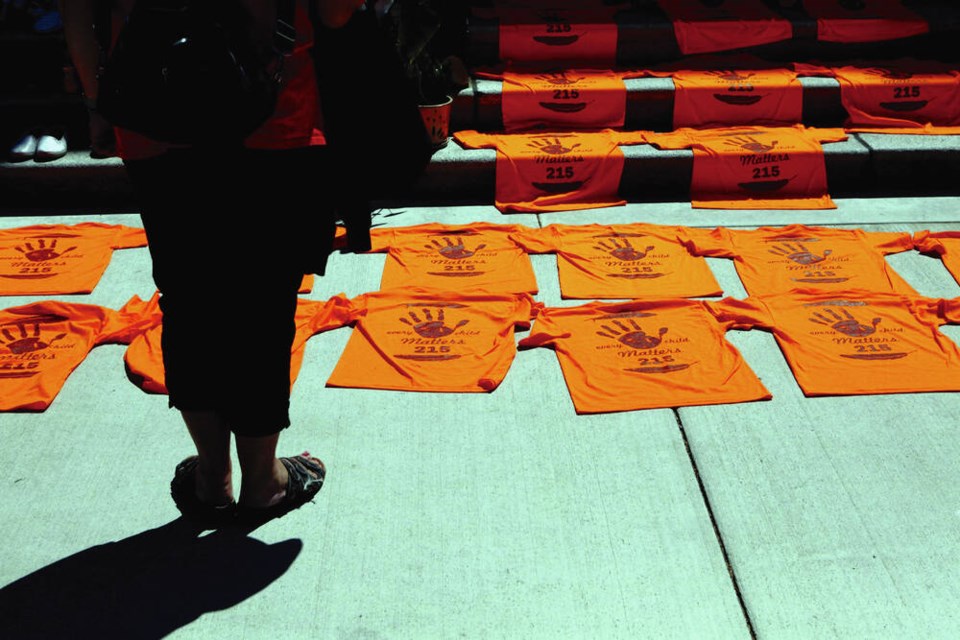If the major goal of the Truth and Reconciliation movement is to bring healing and encourage reconciliation between Indigenous and non-Indigenous Canadians, it will not be achieved by impressive-sounding “call to action” speeches.
It will be about learning.
Nor will truth and reconciliation be accomplished by lofty political promises or by public acknowledgements that such and thus is occurring on unceded territories (which covers most of B.C.), or by tearing down statues of those now out of favour or by rejigging museums and renaming streets to “de-colonialize” mistakes made and wrongs done in another time.
Maybe it’s a start, but it’s not nearly enough.
The fact is that the Constitution could not be clearer that Indigenous land rights do exist, according to Benjamin Ralston, a lecturer and researcher at the Indigenous Law Centre at the University of Saskatchewan.
But the flaw, says Ralston, is in the interminable fights over exactly what those rights are, which can take decades to resolve in non-Indigenous courtrooms or in government-organized treaty negotiations — all of which serves only to reveal “cognitive dissonance” in the system when it comes to achieving meaningful truth and reconciliation.
“The real problem is, what do we do now while these slow processes are proceeding?” asks Ralston.
That’s easy — we start with learning. We start this learning in our schools by teaching why, in light of what we now know, “the dreams of the future are better than the history of the past.”
And yes, that’s a quote from Jefferson, a seriously flawed individual by current standards, but whose vision and words still resonate in a country that struggles to live down its past.
Canadian history, our kids must learn, is similarly a long list of mistakes that will not be erased by adorning new or existing schools with Indigenous symbols.
Instead, schools should be structured to accept that some of the cultural expectations and assumptions underlying both the organization and curricula of public education are in conflict with many of the enduring cultural values, beliefs and practices of Indigenous tribal life.
If truth and reconciliation is to become more that a catchphrase, beliefs and cultural obligations that define Indigenous family life must be taken into account through the configuration of our schools in 2021.
Currently, and I do not believe that this is overstating the case, attempts to force-fit Indigenous kids into what is still essentially a colonial model of public education are only a few generations away from the assumptions that led to the development of the residential schools first established in the 1880s — the stated purpose of which was to assimilate Indigenous children into Euro-Canadian society.
What is needed, if truth and reconciliation is to become part of every child’s understanding, is a curriculum that is well-resourced and culturally sensitive; a curriculum that is aligned with the learning needs, languages, priorities and aspirations of K-12 Indigenous kids, and that is delivered through culturally appropriate teaching strategies, and in culturally appropriate settings.
In her book Truth and Reconciliation in Canadian Schools, author Dr. Pamela Rose Toulouse, an Ojibwe/Odawa woman from the community of Sagamok Anishnawbek in Northern Ontario, provides personal insights, authentic resources, interactive strategies and lesson plans that support Indigenous and non-Indigenous learners in the classroom.
Toulouse has published over 50 education resources, ranging from books to curriculum documents.
Her book should be a must-read for trustees, administrators and teachers in the public system.
Toulouse presents a culturally relevant and holistic approach that facilitates relationship building and promotes ways to engage in everyday reconciliation activities and perspectives that include residential school history, treaty education, Indigenous contributions, First Nation/Métis/Inuit perspectives and sacred circle teachings that can be integrated into public school curricula.
If our national and global call to truth and reconciliation action is ever to be realized, Toulouse’s essential resource to teaching and learning about Indigenous history could be part of that. Her text moves “beyond acknowledgements and apologies” to knowledge, culture and contributions to a restorative education about, and with, Indigenous peoples. In well-organized, clear language, Toulouse first maps out and then explains important First Nations concepts and methods for meaningful teaching and learning.
But there is more to it than that. Much more. It is and will continue to be, especially for the coming generation, about learning.
As American poet Amanda Gorman explains so clearly:
“Every day we are learning
How to live with essence,
not ease.
How to move with haste,
never hate.
How to leave this pain that is beyond us
behind us.
Just like a skill or any art,
We cannot possess hope without practising it
It is the most fundamental craft we demand of ourselves.”
Geoff Johnson is a former superintendent of schools.



